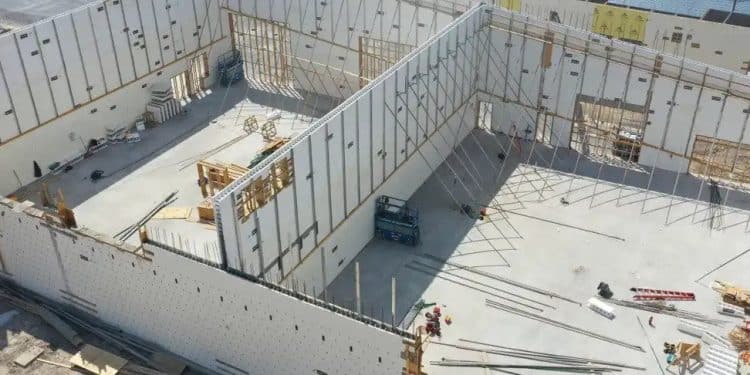Concrete is an indispensable material in the world of construction, playing a pivotal role in creating the structures we live and work in today. Its versatility, strength, and durability have made it the backbone of modern building.
Concrete comes in a variety of shapes & sizes, as well as prices. In this article, we will delve into the various ways concrete is used in construction, its properties, advantages, and innovations that have revolutionized the construction industry.
Foundations and Footings
One of the primary applications of concrete in construction is in the creation of foundations and footings. These structures provide stability and support to buildings, ensuring they remain structurally sound. Concrete foundations and footings are typically made by pouring a mixture of cement, water, and aggregates into excavated trenches. Once cured, they form a solid base upon which the rest of the structure is built. The strength and durability of concrete make it ideal for withstanding the weight of buildings and resisting ground movements.
Bridges and Infrastructure
Concrete plays a crucial role in building bridges, highways, tunnels, and various infrastructure projects. Its ability to bear heavy traffic loads, resist corrosion, and endure extreme weather conditions makes it an ideal material for infrastructure construction. Prestressed concrete, where the steel reinforcement is placed under tension before concrete is poured, is often used to create long-span bridges, ensuring their stability and longevity.
Pavements and Roads
Concrete is the material of choice for constructing pavements, sidewalks, and roads in many urban areas. The durability of concrete helps roads withstand the constant wear and tear of vehicular traffic, making it a cost-effective choice over time. Additionally, concrete pavements are smoother, require less maintenance, and offer improved skid resistance, enhancing road safety.
High-Rise Buildings
Concrete is instrumental in the construction of high-rise buildings. Its ability to support vertical loads and distribute them evenly throughout the structure allows architects and engineers to design tall, impressive skyscrapers. Reinforced concrete core walls and floor slabs provide the necessary stability, while innovative construction techniques, such as slipforming and jumpforming, streamline the construction of tall buildings.
Dams and Reservoirs
The construction of dams and reservoirs for water storage and flood control relies heavily on concrete. Massive concrete structures are engineered to withstand immense water pressure and environmental forces. The strength and durability of concrete ensure that dams and reservoirs remain operational for many decades, contributing to water resource management and hydropower generation.
Structural Framework
Concrete is widely used in constructing the structural framework of buildings. Reinforced concrete, which incorporates steel reinforcement bars (rebar) within the concrete mix, provides enhanced strength and flexibility. This allows it to withstand heavy loads, seismic activity, and adverse weather conditions. From columns and beams to slabs and walls, reinforced concrete components are fundamental in creating robust, long-lasting structures.
Retaining Walls and Earthworks
Concrete retaining walls are essential for stabilizing sloped terrain and preventing erosion. They are commonly used in landscaping, highway construction, and residential developments to create level surfaces and maintain the integrity of landscapes. Precast concrete blocks are often used for their ease of installation and structural strength. Concrete can be used to build or rebuild sidewalks, driveways, during and after some home services like flooring or waterproofing.
Underground Structures
Concrete is indispensable in the construction of underground structures such as tunnels, subway systems, and underground parking garages. Its ability to withstand high pressure and provide a stable environment in subterranean conditions is essential for the safety and functionality of these spaces.
Decorative Concrete
Beyond its structural applications, concrete offers a wide range of design possibilities. Decorative concrete techniques, such as staining, stamping, and polishing, can transform ordinary concrete surfaces into aesthetically pleasing features. Decorative concrete is used for countertops, floors, facades, and even outdoor landscaping elements like patios and pool decks.
Concrete is also making strides in sustainable construction practices. Innovations include the use of recycled materials like fly ash and slag in concrete mixes, reducing the environmental impact of production. Additionally, advanced concrete formulations are being developed to enhance energy efficiency and reduce greenhouse gas emissions associated with cement production.
Concrete is the cornerstone of modern construction, offering unparalleled strength, durability, and versatility. It forms the basis of our buildings, bridges, roads, and infrastructure, contributing to the growth and development of societies around the world. As technology and sustainable practices continue to advance, concrete will remain a fundamental material in the construction industry, shaping the skylines and landscapes of the future. Its adaptability and enduring qualities ensure that it will continue to play a vital role in the evolution of architecture and engineering.





